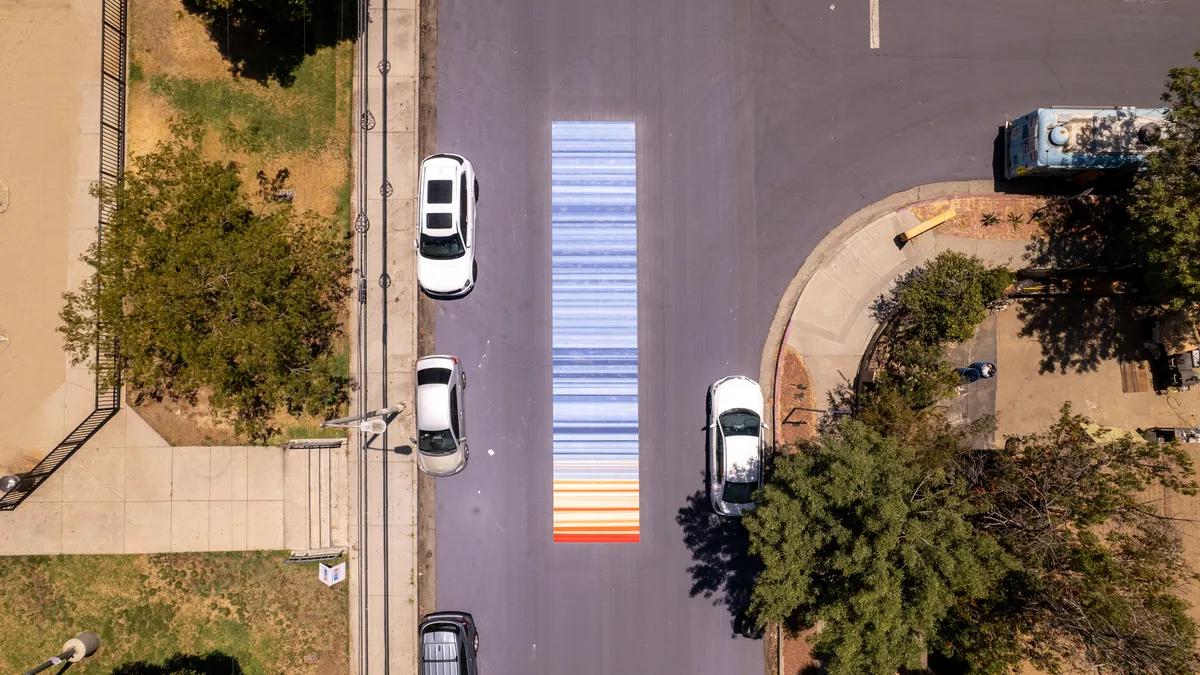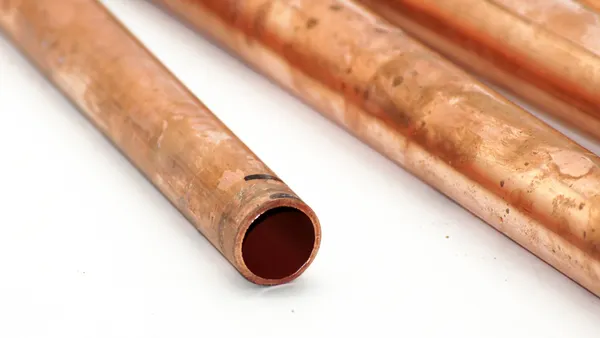Dive Brief:
- Reflective pavement coating helped cool down one of Los Angeles’ hottest neighborhoods over a year-long period, according to a recently published study in Environmental Research Communications, but some researchers argue in favor of increasing shade as a better way to protect people from dangerously high temperatures.
- The research on the installation in LA’s Pacoima neighborhood is “probably the most comprehensive study on controlled cool pavement” due to the large amount of data and variables considered, said Haider Taha, an atmospheric modeler, president of the research company Altostratus and the study’s author.
- Over 700,000 square feet of dark asphalt surfaces in Pacoima were covered with solar-reflective pavement coating in the summer of 2022 through a partnership between local nonprofit Climate Resolve and roofing and waterproofing manufacturer GAF, which provided the coating.
Dive Insight:
Pavement that reflects, rather than absorbs sunlight, has emerged as a tool cities are considering to mitigate the increasing danger of extreme heat.
GAF funded the recently released peer-reviewed study, although the company had no role in the study’s design, data collection, modeling or analysis of the results. The research found that during an extreme heat event, the cool pavement-covered area saw ambient air temperatures that were as much as 3.5 degrees Fahrenheit cooler than those in the adjacent neighborhood. On sunny days, ambient air temperatures were reduced by up to 2.1 degrees Fahrenheit. During summer nights, they were reduced by up to 0.5 degrees Fahrenheit. The coating also lowered surface temperatures by up to around 10 degrees Fahrenheit.
What does that mean for the people who live in Pacoima? Melanie Torres, a resident and the Pacoima Beautiful’s Cool Community Project organizing manager, said she’s felt a difference. Pacoima Beautiful is a local environmental justice organization and helped GAF and Climate Resolve with community engagement for the reflective pavement project.
Torres often eats lunch in one of the parks where the coating is deployed. “I can just sit on the grass near the basketball court and feel just the breeze — and not necessarily a hot breeze,” she said. A food vendor who frequents the neighborhood told Torres that “she feels the difference in the breeze more than anything.
Torres said she hasn’t heard any complaints about the reflective pavement coating during her community engagement efforts. However, reflective pavement is not immune to criticism.
Some researchers have found that the solar energy reflected off cool pavement can actually increase how hot pedestrians feel. Taha, however, said that his study indicated an “improvement in thermal sensation,” noting that every location within Pacoima has “its own dynamics” that could lead to slightly different results. Mean radiant temperature — a measurement of thermal comfort — “goes up and down. It's not always cooler,” he said. “The overwhelming effect is the cooling.”
But no matter how effective reflective coatings are, they can’t beat shade, V. Kelly Turner, associate director of the University of California, Los Angeles’ Luskin Center for Innovation and an associate professor of urban planning and geography, said in an email. Shade can cool people by up to 30 degrees Celsius, or 54 degrees Fahrenheit, in hot, dry environments, she said.
“No change in surface will protect the body from heat as effectively as preventing sunlight from hitting the body in the first place,” she said. “Shade — blocking the sun with trees, canopies, and tall features like walls and buildings — is by far the most effective way to cool people outdoors.”
She noted that reflective pavement doesn't have a large effect on air temperature unless it is deployed widely and, even when that happens, the cooling benefit is moderate. She believes that reflective pavement is an appropriate choice in locations where it would be difficult to replace surfaces that absorb a lot of heat with “something else like vegetation and where the goal of mitigating surface material contributions to heat is the priority as opposed to protecting people's bodies outdoors.”
“I think cities should see reflective pavement as one tool among many, if deployed comprehensively, that could mitigate the regional urban heat island,” Turner said. “They should see this goal as parsimonious from the public health goal of protecting people's bodies from the sun.”











